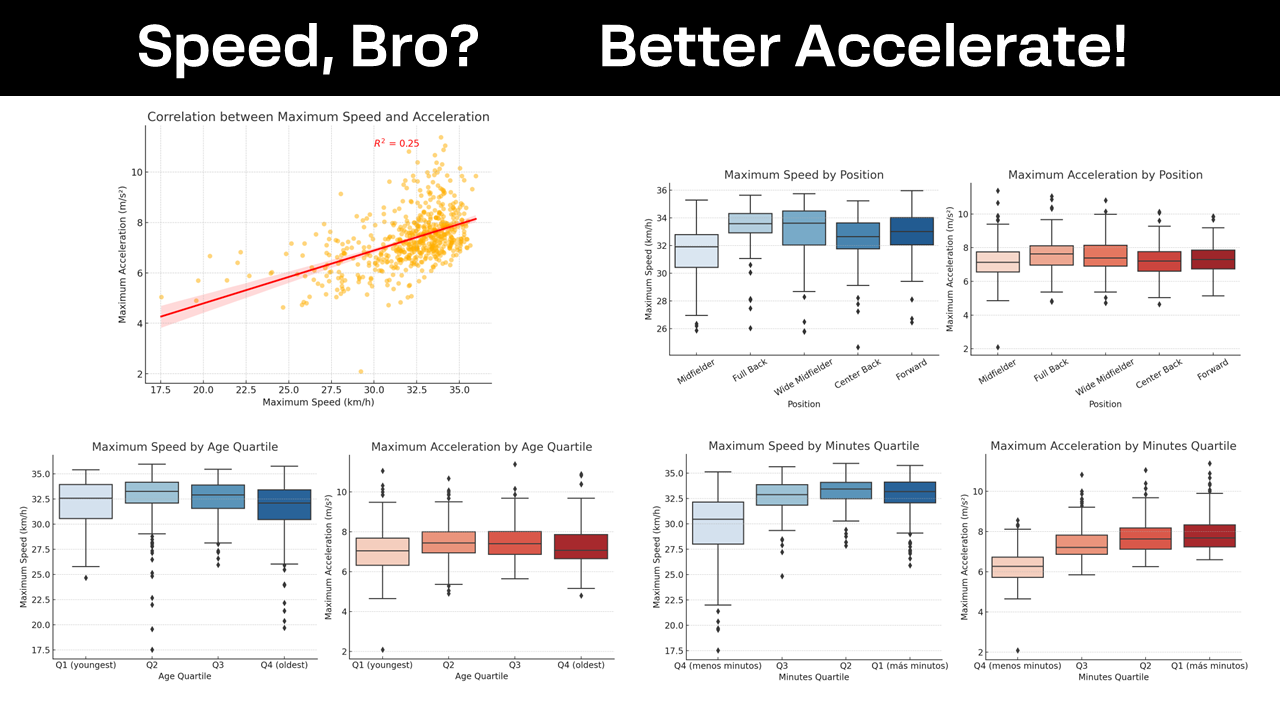
06 Feb Speed, Bro? Better Accelerate: What Really Matters in Modern Football
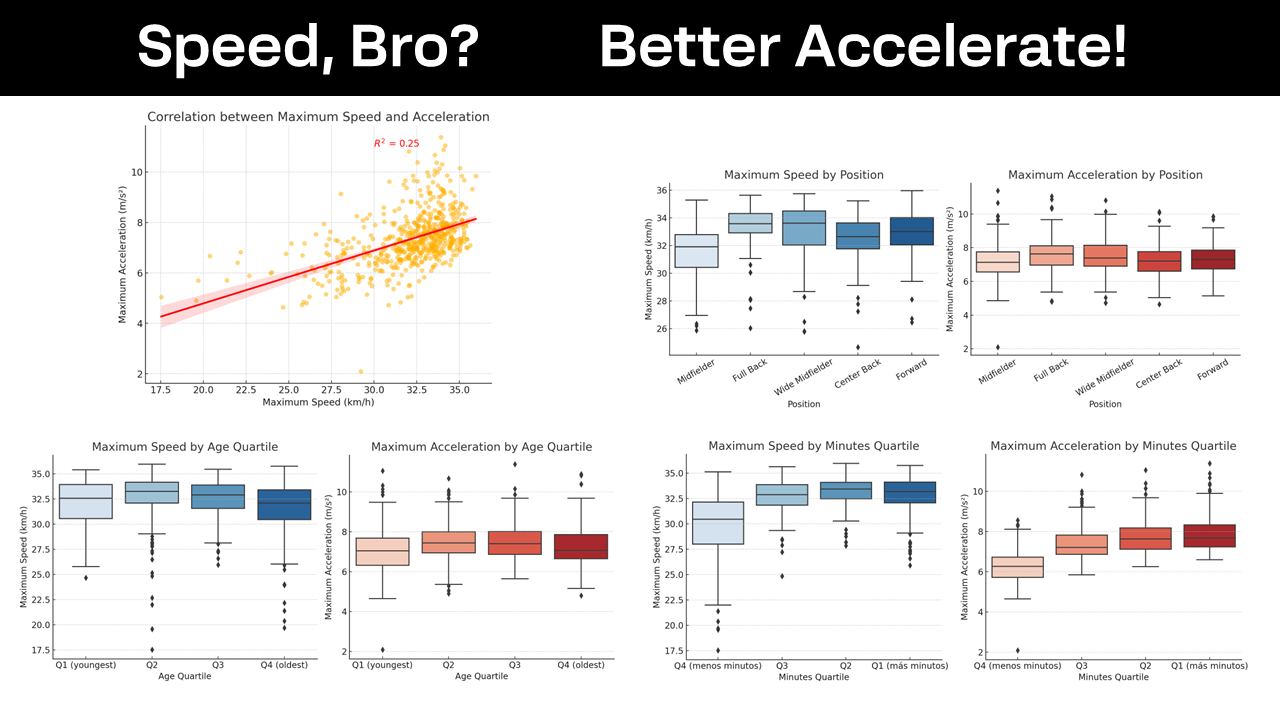
In professional football, speed has always been synonymous with physical dominance. A fast player is often seen as a lethal weapon. However, the data tells us something different: acceleration is the real superpower in the modern game. While top speed is important in specific situations (balls into space, defensive retreats after a loss of possession), most decisive plays in football happen in tight spaces where what truly makes the difference is the ability to accelerate quickly, not to sustain a long sprint.
In this article, we analyze several myths about speed in football using objective data. And there are some surprising findings.
Myth #1: «Players who run faster also accelerate faster»
It is easy to assume that a player who reaches high speeds is also the one who accelerates the fastest. But the data tells us otherwise.
Analyzing the relationship between maximum speed and maximum acceleration in LaLiga EA Sports players, we found a moderate correlation (r = 0.50, R² = 0.25). This means that being fast in top speed does not guarantee being explosive in the first few meters. Acceleration is an independent quality that depends more on power and reaction than on sustained speed.
Practical Application: In training, working only on top speed is not enough. It is essential to train explosive starts, changes of pace, and short accelerations, as these actions allow a player to gain an advantage in most one-on-one situations.
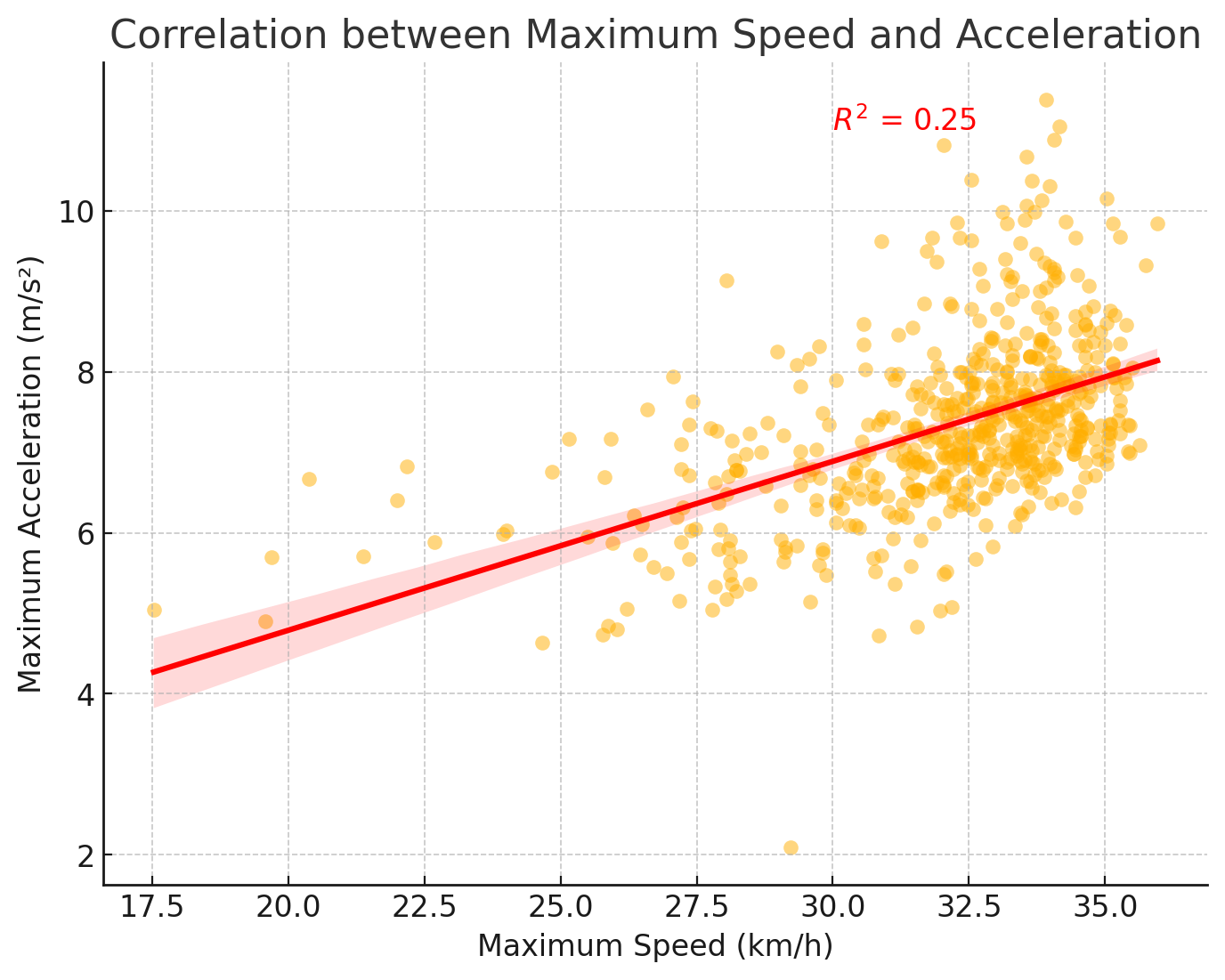
Myth #2: «Players with fewer minutes achieve higher physical values because they are fresher»
A common belief is that substitutes coming on «fully charged» can run faster and with greater intensity than starters with many minutes played. But the data disproves this idea.
We divided players into quartiles based on minutes played and found that those who play the most minutes achieve the highest values in both maximum speed and acceleration. This suggests that high-participation players are not only the most resilient but also the most explosive.
Practical Application: The accumulation of minutes does not seem to negatively affect the ability to sprint at maximum intensity. Coaches can trust that their starters will continue to perform at high intensity, even with significant playing time.
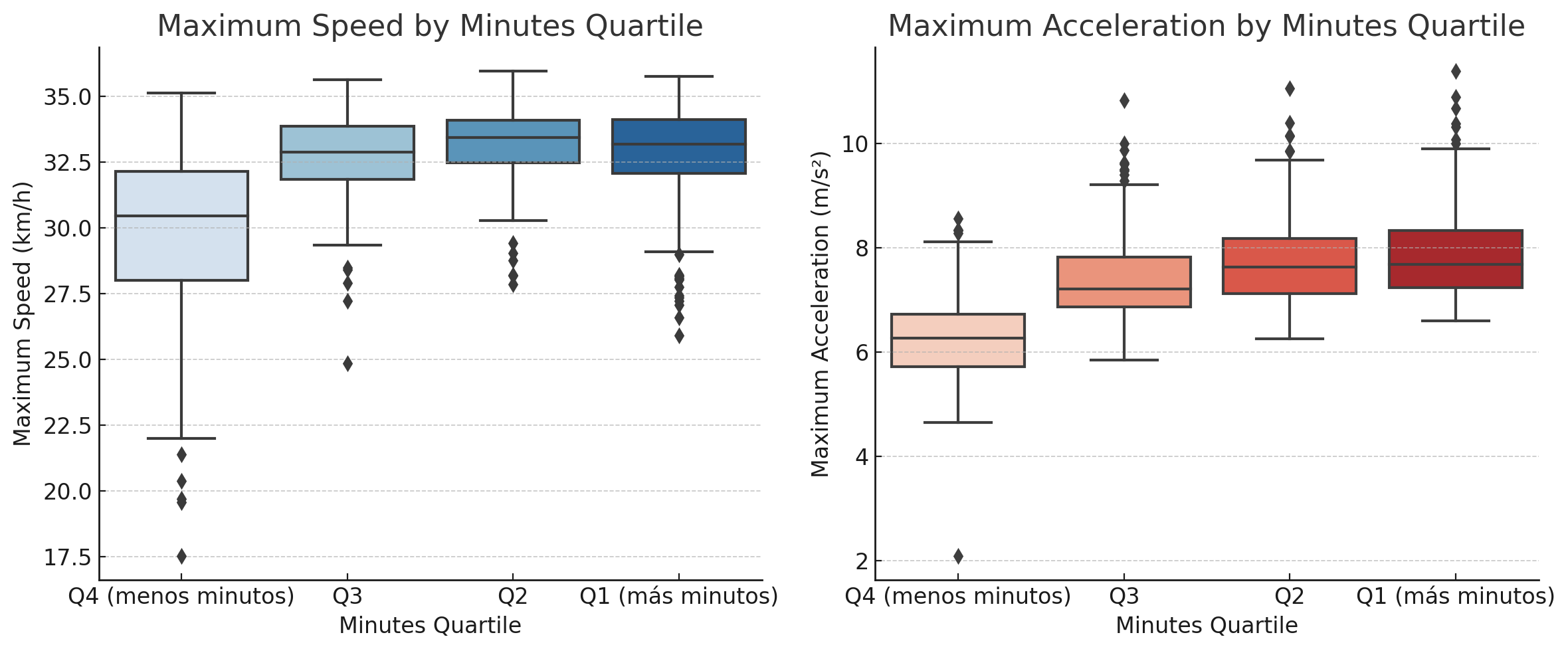
Myth #3: «Younger players have better physical attributes»
It is often assumed that younger players have an advantage in speed and acceleration, while veteran players lose these capabilities over time. However, analyzing the data revealed a partially surprising result:
- Maximum speed: Younger players are indeed faster (p < 0.05), indicating that top speed declines with age.
- Maximum acceleration: No significant differences were found between young and veteran players (p = 0.18). This means that explosiveness in the first meters is maintained with age.
Practical Application: Acceleration is a skill that can be maintained with proper training. Veteran players can still be decisive in tight spaces, even if they have lost some top speed.
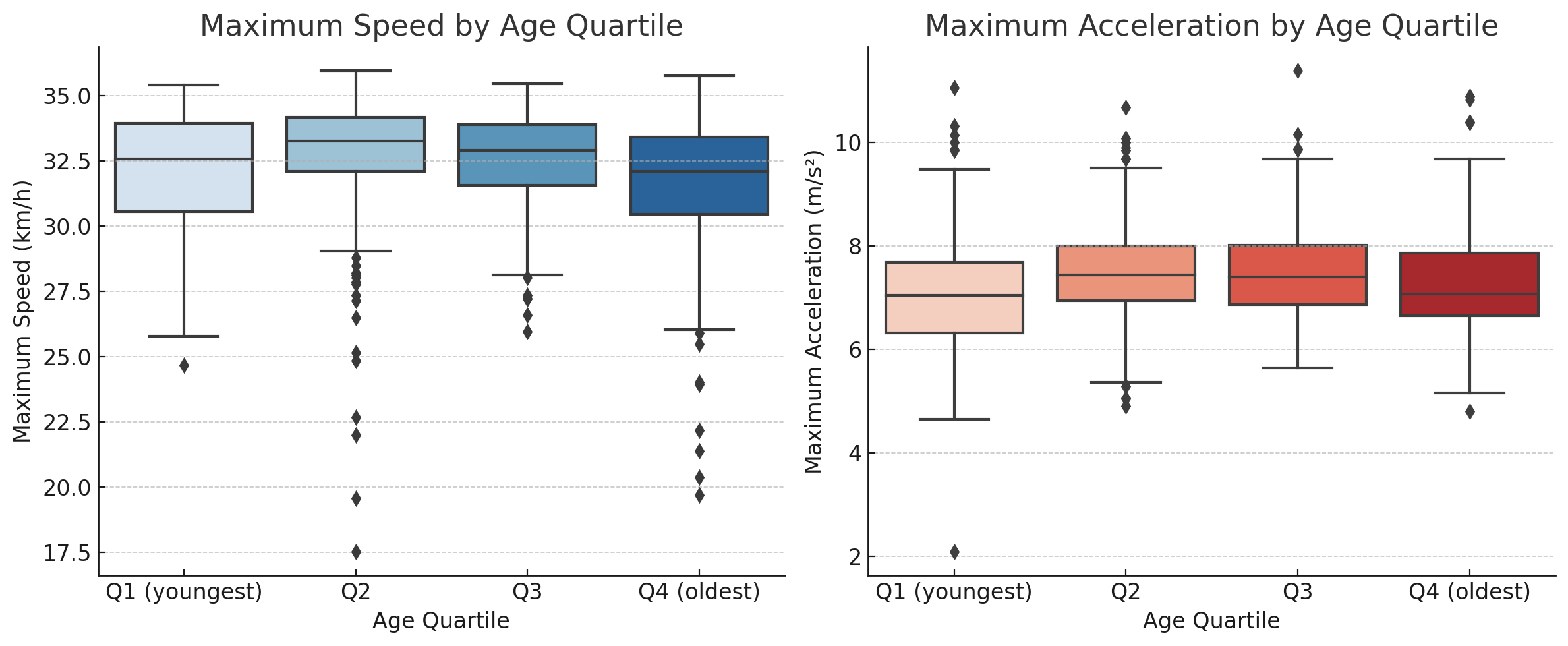
Myth #4: «Physical dominance is measured the same way across all positions»
When discussing physical dominance in football, the conversation often revolves around speed and acceleration. However, these attributes should not be evaluated the same way for all positions. Analyzing speed and acceleration by position revealed significant differences (p < 0.01):
- Full-backs and wingers are the fastest and most explosive players, reaching the highest values in both speed and acceleration.
- Forwards have high top speeds but lower acceleration compared to full-backs.
- Center-backs and midfielders show lower values since their game relies more on positioning than on speed.
This raises a key question: Is it logical to demand the same physical standards from a deep-lying midfielder as from a winger?
If speed and acceleration are the only factors considered when assessing a player’s physical ability, we might end up dismissing profiles like Kroos or Busquets, key players for their teams who compensate with vision, tactical intelligence, and game reading.
Practical Application: Scouting and performance evaluation must be tailored to each position. Applying the same speed and acceleration criteria to a central midfielder as to a full-back or winger makes little sense. Physical attributes should be interpreted based on a player’s role within the team.

Conclusion: Acceleration is the Key in Modern Football
Top speed remains relevant in specific situations (long balls, quick transitions), but most tactical actions occur in tight spaces, where acceleration is the decisive factor.
Modern football demands explosive players capable of accelerating quickly in the first meters to gain an advantage. Therefore, coaches should prioritize acceleration training in their physical preparation, adapting it to the specific needs of each position.


